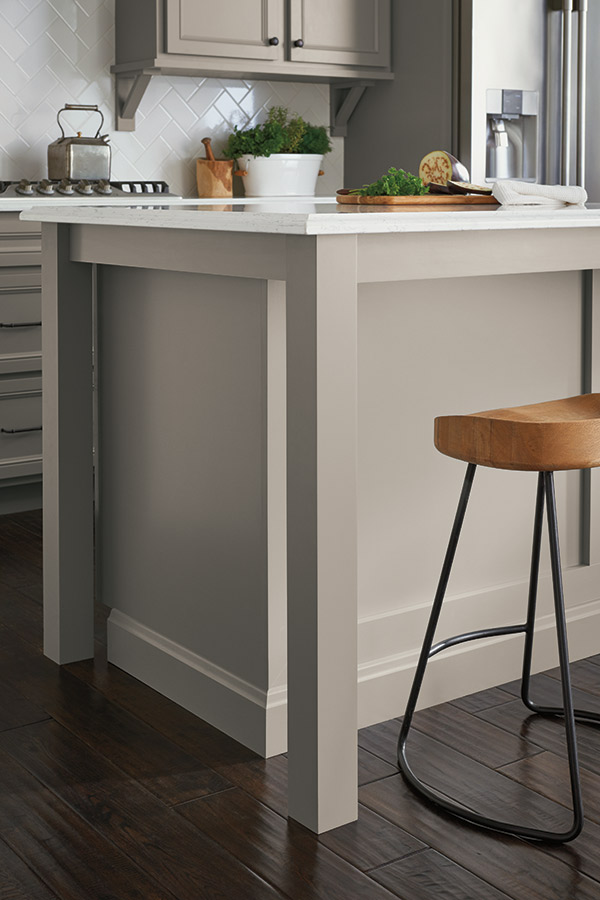Achieve the Perfect Balance of Form and Function with Legs For Kitchen Island
Achieve the Perfect Balance of Form and Function with Legs For Kitchen Island
Blog Article
An Overview to Choosing the Perfect Legs For Kitchen Area Island for Your Home
Choosing the suitable legs for your kitchen island is a nuanced decision that influences both the performance and aesthetic allure of this central room. As you take into consideration these components, it comes to be obvious that the right legs can change not just the look of your cooking area but also its usability for years to come.

Comprehending Cooking Area Island Legs
When picking legs for a kitchen island, it's vital to understand their useful and visual roles in the overall style. The legs act as a critical support system, guaranteeing stability and toughness for the island, which frequently works as a work space, eating area, or gathering place. The option of product and building strategy should be robust sufficient to stand up to daily usage and potential wear.
In addition to their architectural obligations, legs add dramatically to the island's visual charm. They can boost the kitchen's style, whether via standard, contemporary, or eclectic styles. The elevation and proportion of the legs are additionally critical considerations; they should integrate with the island's counter top elevation while guaranteeing comfortable seating for those utilizing the room.
Furthermore, the leg layout can affect the total flow of the kitchen area. Open, airy leg designs can create a sense of lightness, while solid, significant legs might share a more based and steady aesthetic - Legs For Kitchen Island. Comprehending these visual and functional elements will certainly lead homeowners in making educated options that complement their cooking area's style and improve its use
Popular Styles and Products
The selection of legs for a kitchen area island includes a selection of prominent designs and products, each offering distinct features that can improve both capability and visual appeals. Among one of the most popular styles are contemporary, rustic, and conventional. Contemporary legs frequently feature sleek, minimal styles that emphasize simpleness and tidy lines, making them excellent for modern cooking areas. Rustic styles, on the various other hand, welcome natural environments and usually display redeemed wood or distressed surfaces, adding heat and appeal to the area. Typical legs commonly display luxuriant information and workmanship, improving classic kitchen area designs.

Elevation and Stability Considerations

The legs of the kitchen area island need to provide ample support, guaranteeing that the framework can stand up to everyday use without moving or wobbling. Material selection plays a significant role in security; metal legs, for circumstances, tend to offer higher toughness compared to wood.
Matching Your Kitchen Area Aesthetic
Selecting the best legs for your kitchen island goes beyond capability; it also plays a significant function in the total aesthetic of the room (Legs For Kitchen Island). When choosing legs, consider the layout style of your cooking area.
Legs that enhance or comparison with your island's surface area and bordering cabinets can develop aesthetic harmony or striking focal points. Additionally, take into consideration the surface of the legs; matte, glossy, or textured coatings can dramatically influence the general feel of the cooking area.
Setup and Maintenance Tips
Setting up kitchen area island legs requires find out here now careful focus to detail to guarantee both security and visual allure. Begin by picking an ideal location for your island, guaranteeing it is level and has sufficient room for activity. If you are affixing the legs to a wall surface or making use of braces for added assistance, make use of a stud finder to find wall surface studs. Mark the positioning of the legs accurately before drilling.
When securing the legs, make use of top quality screws and, if needed, timber glue for extra stamina. For metal legs, ensure that you are making use of appropriate anchors and devices to avoid damage to your floor covering. It is advisable to look for levelness after installment, making adjustments as required to prevent tottering.
Upkeep is just as important for long life - Legs For Kitchen Island. Routinely inspect the legs for any indicators of wear or helping to loosen, particularly in high-traffic areas. Clean the legs with a suitable cleaner, staying clear of abrasive materials that might scrape the surface area. For wood legs, think about using a wood conditioner occasionally to preserve their finish. By complying with these installment and maintenance pointers, you can guarantee that your kitchen island legs continue to be both visually attractive and practical.
Conclusion
In verdict, choosing the appropriate legs for a cooking area island demands cautious consideration of elevation, security, and visual compatibility. Ultimately, thoughtful leg selection plays a vital duty in boosting both the practicality and style of the cooking area room.
When selecting legs for a kitchen area island, it's essential to comprehend their practical and visual functions in the total design. Open, ventilated leg designs can create a sense of lightness, while solid, significant legs might convey an extra grounded and stable aesthetic. The legs of the kitchen island need to supply sufficient support, guaranteeing that the framework can endure day-to-day use without changing or tottering.Installing kitchen island legs calls for mindful attention to information to guarantee both stability and visual charm.In final thought, selecting the proper legs for a kitchen area island requires cautious factor to consider of elevation, stability, and visual compatibility.
Report this page